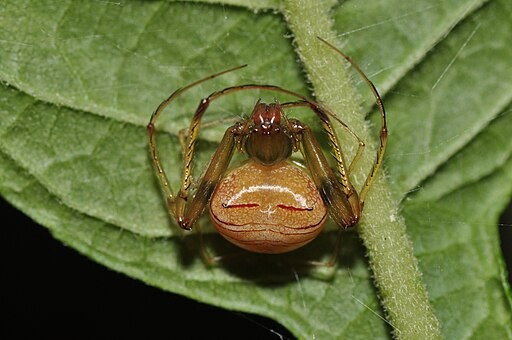A Costa Rican spider uses a hunting strategy that manipulates the way other spiders build their webs.

A Tricky Hunting Style
Many of the pirate spiders in the world have an appetite for other spiders, practicing various schemes to carry out their tricks. Some species strum the threads of the webs of their victim to convince them that they have caught an insect. As the unsuspecting web owner comes to get its prey, it will be attacked by the pirate spider. Some species also mimic the signature rhythms of other spiders' courtship dance, seducing their would-be suitors to their deaths.
Meanwhile, a different hunting strategy is practiced by a little-known arachnid species called Gelanor siquirres. While most pirate spiders invade their cousins' webs, G. siquirres trick their potential prey into constructing a web right into a trap.
In the lowland rainforests in Costa Rica, a species of spiders called orb weavers let loose "floating lines" at nightfall. These single strands of silk blow in the breeze until their free end attaches to another surface, such as a tree branch. The spider secures the second anchor point while the first moored line is the web foundation.
When G. siquirres attacks, the orb weaver does not scuttle across the bridge line for safety but instead walks into a trap. At this point, G. siquirres casts its silk line not for web building but to intercept that of the orb weaver.
Arachnologist Laura Segura-Hernández and her colleagues witnessed this scene. While visiting a biological reserve in the country, they encountered an unusual configuration of multiple web strands converging at a single leaf. They also noticed a floating line of another spider caught on one of those strands.
While the orb weaver is scuttling across the floating line, a pirate spider emerges behind its hideout and moves toward the intersection. As the orb weaver feels the vibrations from the crawling pirate spider, it attaches a dragline and flings itself off the bridge line. At this point, the pirate spider in waiting is close on its heels, pursuing from its dragline.
As the two spiders hang on the thread, they exchange blows while swinging from the rigging. The fight ends with a swift attack from the pirate spider, immobilizing the orb weaver.
Cannibalism Among Spiders
Spider cannibalism refers to an act in which a spider consumes all or part of another spider of the same species as food. This act is often demonstrated as part of the arachnid's reproductive cycle.
In species like the black widow spider (Latrodectus mactans), the male is likely killed by the female after copulation, sometimes even before sexual intercourse. There is also the redback spider (Latrodectus hasselti), where the male is killed by his partner right after inserting his second palpus in the female's genital opening.
A few species show male-biased sexual dimorphism, such as Allocosa brasiliensis, Evarcha culicivora, and Argyronetia aquatica. The male members of the latter, also called water spiders, prefer mating with larger females as they cannibalize females smaller than themselves.
Spider cannibalism does not only involve mating partners, as this may also be shown among mothers and offspring. The species Stegodyphus lineatus exhibits matriphagy, where the offspring eat their mother. Meanwhile, a female member of Segestria florentina can sometimes die while guarding her eggs, only to be eaten later by the hatched spiders.
RELATED ARTICLE : Cannibal Baby Wasps Eat Their Siblings When Food Is Running Low [REPORT]
Check out more news and information on Cannibalism in Science Times.









